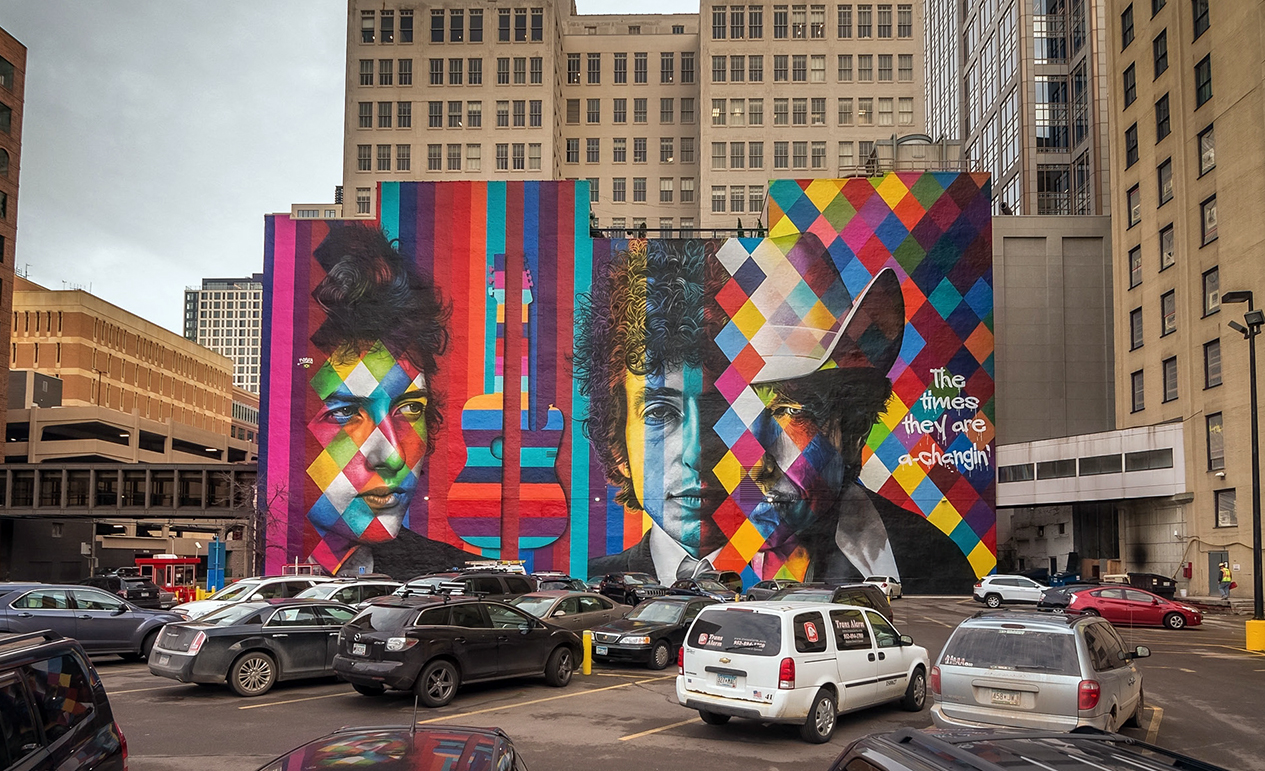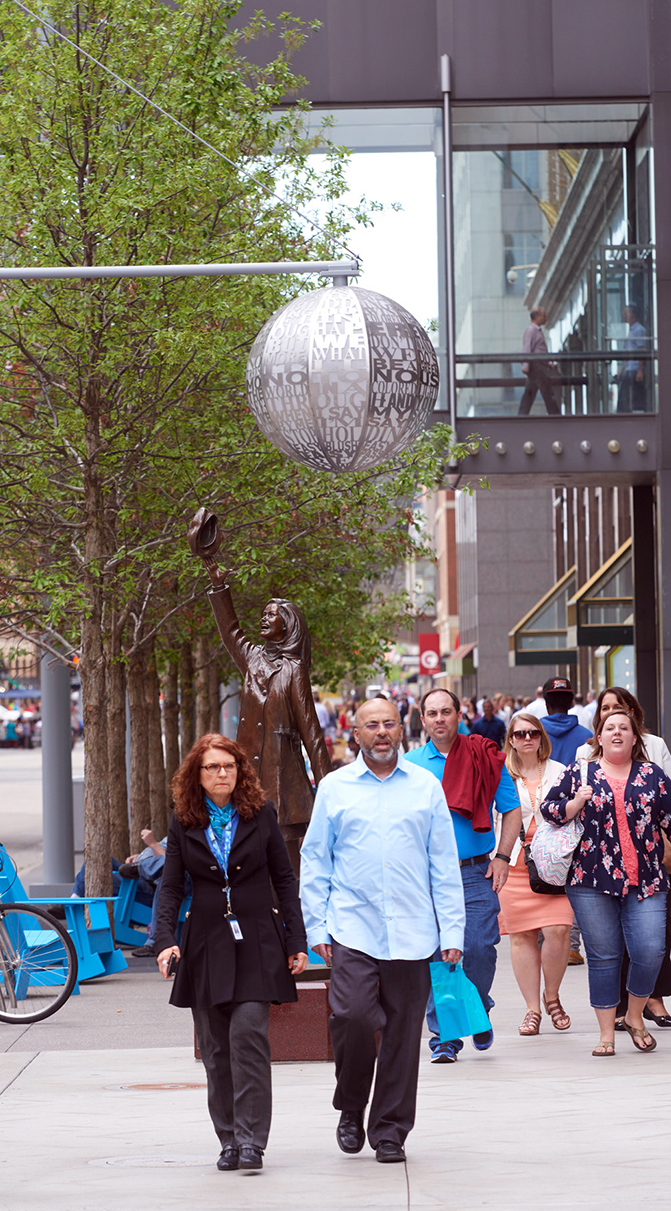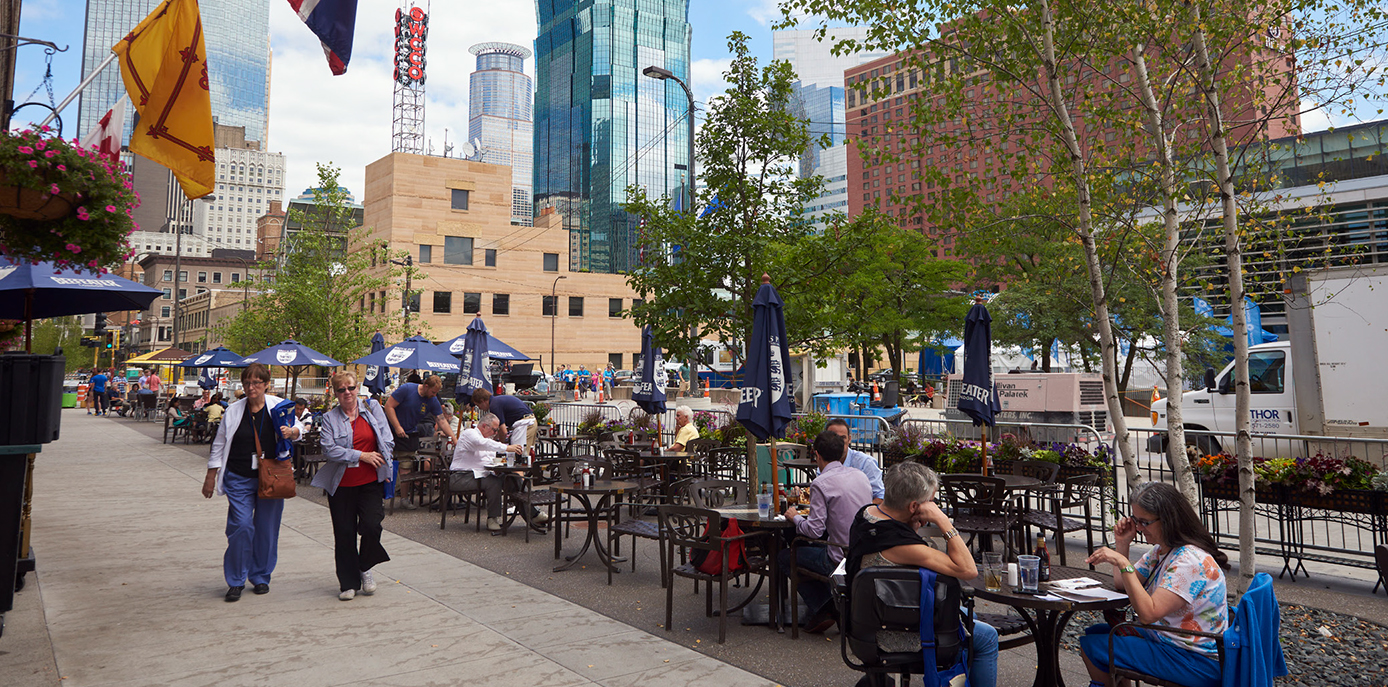My colleagues and I have recently settled into a new office overlooking the activity of downtown Minneapolis ten stories below. This means a lot to me: for more than a decade before joining Stantec at its then-suburban campus, I served as the City of Minneapolis’s downtown planner. Our move has brought me back to the part of the region I love most and a lifestyle I personally and professionally value. But the move had nothing to do with where I wanted to work and everything to do with the idea that to “design with community in mind,” as we say, we need to be in the heart of that community.
We’re not the only ones who see downtowns as central to their communities. The International Downtown Association (IDA) recently released The Value of U.S. Downtowns and Center Cities, a report that gives us an idea of what makes a truly successful downtown. IDA’s members—the term of art is urban place management organizations, generally business improvement districts or downtown partnerships—are grounded in more than 2,500 North American downtowns, which puts IDA in a perfect position to analyze what makes for a thriving downtown with intrinsic value to its region. Stantec’s Urban Places jumped at the chance to work with IDA on measuring the value of downtowns and center cities for their larger regions. As part of the first update of the report, I helped evaluate best practices and metrics for a group of downtowns that are either already well-established, successfully growing, or beginning to gain momentum.
The Value of Downtowns through a planner’s eyes
The IDA measured the performance of 24 downtowns across five key areas—economy, inclusion, vibrancy, identity, and resilience. One of the downtowns happens to be the one I know best—Minneapolis, which the report classifies as established. Here’s my quick take on the five principles as they play out there. I’ve started with Inclusion, since I believe efforts in the other four areas can’t succeed without it.
 Public art (even when it overlooks a parking lot) contributes to downtown Minneapolis’s unique identity. Photo: Minneapolis Downtown Council
Public art (even when it overlooks a parking lot) contributes to downtown Minneapolis’s unique identity. Photo: Minneapolis Downtown Council
Inclusion—Downtowns are the hubs of their regions: epicenters of transportation options, places of diverse entertainment and in-demand housing, and usually a region’s economic engine. While not all downtowns are the same, they do all tend to put into sharp focus the challenges of homelessness, perceptions of crime, shifts in retail buying with vacant storefronts, and a lack of coordinated youth activities. The study found that 29% of residents in downtowns are middle-income—a statistic that combats the notion that only wealthy or very low-income people live downtown. As downtowns add more and more expensive new housing, cities need to work to protect housing stock that maintains the diversity of options.
Economy—IDA found that downtowns constitute an average of just 3% of city land area but yield much higher proportions of overall assessed value. Not only is a downtown’s footprint valuable, but it also generates significant tax revenue. In my work as a planner for downtown Minneapolis, I viewed this as an opportunity to design regulations flexibly for changing markets and a public realm to catalyze new development. Downtowns have an opportunity to test new models for building up, mixing uses, and eliminating barriers to redevelopment. The resulting added tax revenue bolsters a city’s ability to support neighborhoods outside of the downtown.
Vibrancy—On average, the populations of the downtowns studied grew by 27% from 2010 to 2016 compared to only 7% citywide. The renewed interest in downtown living of recent years has brought people closer to work, entertainment, transit, and shopping. They also trade life in less-dense neighborhoods or suburbs for an opportunity to be among more people. A critical mass of people means you rub shoulders with neighbors and strangers alike. More density of individuals in an area also drives amenities for the collective whole—retail, transit options, parks, and then more housing. This in turn translates to better access and opportunities for everyone.
Identity—Most downtowns are the original city—the place where people first set up businesses and put down roots. Like Minneapolis, many cities began next to water and grew organically. Downtowns usually hold the lion’s share of the elements that establish a city’s identity—civic places and spaces, historic buildings, museums, parks, public art. A downtown builds its brand on its status as a unique place to live, work, and visit.
Resilience—A region builds resilience to economic, social, and environmental shocks by taking deliberate action. Center cities have unusual strengths—economic performance, diversity, density and supply of resources—that help them weather economic downturns and other kinds of disruptions better than other neighborhoods. The cities that will prove especially resilient, however, are those that support residents who could get left behind because they lack the economic and social resources to weather personal storms. YouthLink, a downtown Minneapolis services provider, just opened new housing dedicated to youth experiencing homelessness. Not only are the residents in stable housing with onsite health and career services, but living downtown gives them access to transit, parks, higher education, libraries, and jobs. These resources benefit all of us but are essential for many.
My philosophy on planning, especially in a downtown, is embedded in the concept of access–to daily services, to diverse housing options at all income levels, to mobility choices that take you where you need to go, and to the amenities that make our lives brighter. If we plan for and deliver these things, all people can thrive. The Value of U.S. Downtowns and Center Cities report serves as a valuable snapshot that helps us begin to understand the individual elements that collectively achieve a thriving downtown and region. No matter how a downtown is classified, each can build on the foundation laid by its peers while honing its own identity for success.
 Downtown density plays a key role in economic performance and creates demand for more amenities like stores, transit, parks and housing. Photo: Minneapolis Downtown Council
Downtown density plays a key role in economic performance and creates demand for more amenities like stores, transit, parks and housing. Photo: Minneapolis Downtown Council
More from Author
Stantec | Jul 18, 2024
Why decarbonizing hospitals smartly is better than electrification for healthcare design
Driven by new laws, regulations, tariffs, ESG goals, and thought leaders in the industry itself, healthcare institutions are embracing decarbonization to meet 2050 goals for emissions reductions.
Stantec | Jun 18, 2024
Could ‘smart’ building facades heat and cool buildings?
A promising research project looks at the possibilities for thermoelectric systems to thermally condition buildings, writes Mahsa Farid Mohajer, Sustainable Building Analyst with Stantec.
Stantec | Jun 8, 2024
8 ways to cool a factory
Whichever way you look at it—from a workplace wellness point of view or from a competing for talent angle—there are good reasons to explore options for climate control in the factory workplace.
Stantec | Apr 18, 2024
The next destination: Passive design airports
Today, we can design airports that are climate resilient, durable, long-lasting, and healthy for occupants—we can design airports using Passive House standards.
Stantec | Mar 18, 2024
A modular construction solution to the mental healthcare crisis
Maria Ionescu, Senior Medical Planner, Stantec, shares a tested solution for the overburdened emergency department: Modular hub-and-spoke design.
Stantec | Nov 20, 2023
8 strategies for multifamily passive house design projects
Stantec's Brett Lambert, Principal of Architecture and Passive House Certified Consultant, uses the Northland Newton Development project to guide designers with eight tips for designing multifamily passive house projects.
Stantec | Apr 10, 2023
Implementing human-centric design in operations and maintenance facilities
Stantec's Ryan Odell suggests using the human experience to advance OMSF design that puts a focus on wellness and efficiency.
Stantec | Jul 6, 2022
5 approaches to a net zero strategy that communities can start right now
Whether your community has started on a plan or is still considering net zero, now is the time for all of us to start seriously addressing climate change.
Stantec | Feb 14, 2022
5 steps to remake suburbs into green communities where people want to live, work, and play
Stantec's John Bachmann offers proven tactic for retrofitting communities for success in the post-COVID era.
Stantec | Feb 8, 2022
How gaming technology is changing the way we design for acoustics
Adding 3D sound from gaming engines to VR allows designers to represent accurate acoustic conditions to clients during design.
















